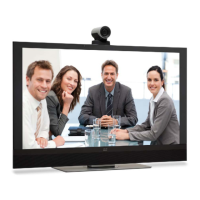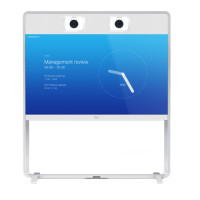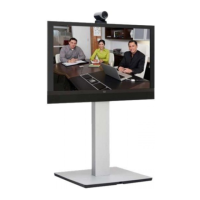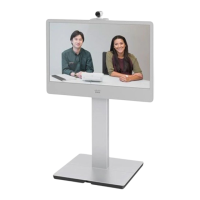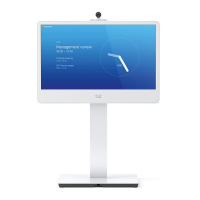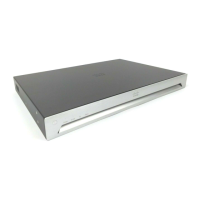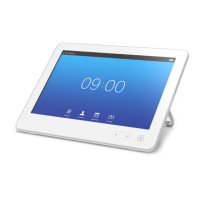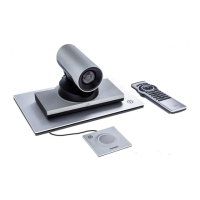D15335.02 Cisco TelePresence MX700 and MX800 API Reference Guide CE8.0, FEBRUARY 2016.
Copyright © 2016 Cisco Systems, Inc. All rights reserved. 109
Cisco TelePresence MX700 and MX800
API Reference Guide
Peripherals commands
xCommand Peripherals Connect
Register peripherals that are connected to the codec, such as control systems and touch
panels. The registered peripherals are displayed on the web interface under Configuration >
Peripherals.
This command should be used when the peripheral connects to the codec for the first time
or when the software version on the peripheral has changed. The list of connected devices is
available with the command xStatus Peripherals ConnectedDevice [n] Status.
Requires user role: USER
USAGE:
xCommand Peripherals Connect [HardwareInfo: "Ha rdwareInfo"] ID: "ID" [Na me:
"Name"] [Network Ad d ress: "NetworkAddress"] [SerialNumber: "SerialNu mber"]
[SoftwareInfo: "Softw areInfo"] Ty pe: Type
where
HardwareInfo: String (0, 100)
The device’s hardware number.
ID: String (1, 100)
A unique ID for the device you are connecting to, typically a MAC address.
Name: String (0, 100)
Define a name for the device.
NetworkAddress: String (0, 100)
Network address for the device you are connecting to.
SerialNumber: String (0, 100)
The device’s serial number.
SoftwareInfo: String (0, 100)
Software version the device is running.
Type: Byod/ControlSystem/Other/TouchPanel
Define the type of device you are connecting to.
xCommand Peripherals HeartBeat
When a peripheral is registered as a connected device, you can set it to send a heartbeat to the
codec to let the codec know that it is still connected.
This will keep the device on the xStatus Peripherals ConnectedDevice list. If the peripheral is
not set to send a heartbeat, the device will disappear from the list after a while.
Note: Does not apply to cameras.
Requires user role: USER
USAGE:
xCommand Peripherals HeartBeat ID: "ID" [Ti meout: Timeout]
where
ID: String (1, 100)
A unique ID for the device you are connecting to, typically a MAC address.
Timeout: Integer (1..65535)
Set how long the device will send heartbeat.
xCommand Peripherals List
Lists all currently and previously connected peripherals.
Requires user role: ADMIN
USAGE:
xCommand Peripherals List [Connected: Connected] [Ty pe: Type]
where
Connected: False/True
Limit the search to currently connected devices.
Type: All/ControlSystem/ISDNLink/Other/TouchPanel
Limit the search by device type.

